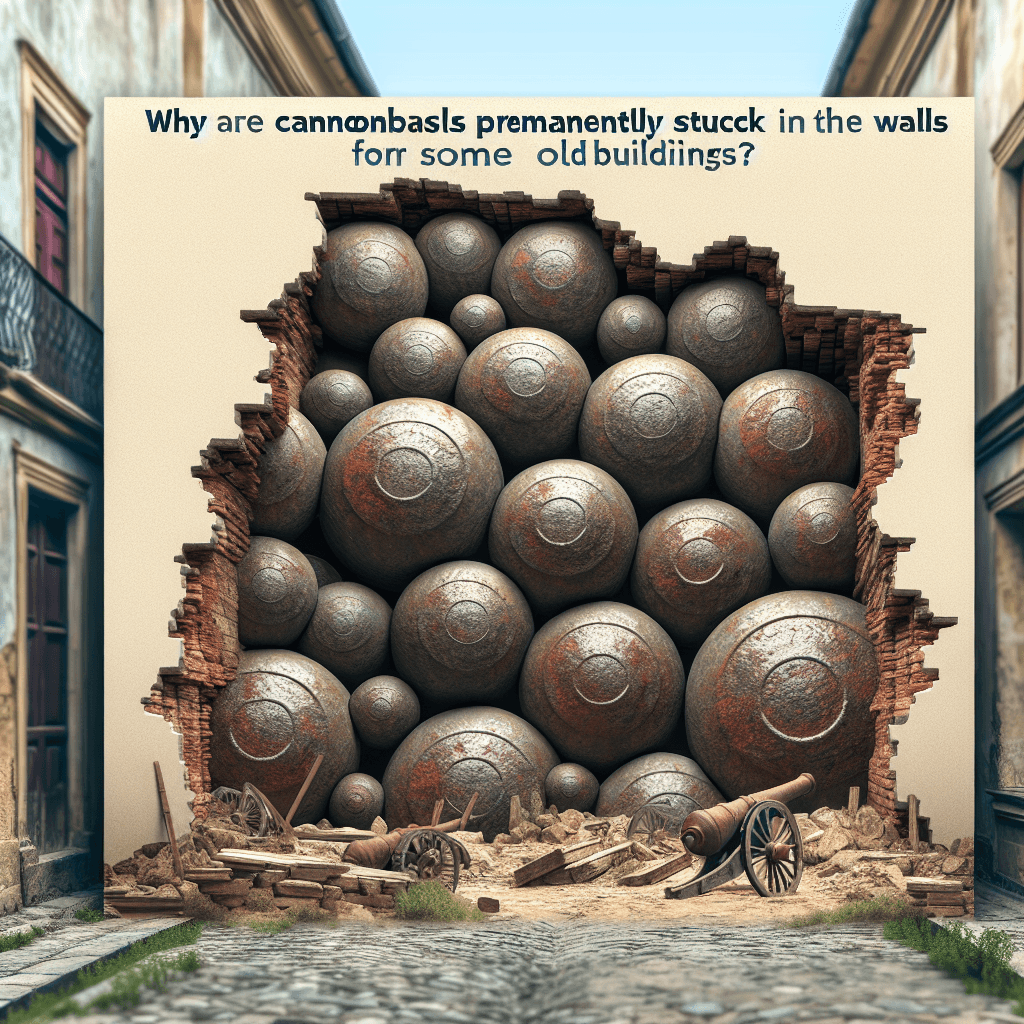Why are cannonballs permanently stuck in the walls of some old buildings
Those cannonballs weren't just left behind by accident. Uncover the surprising and often symbolic reason they remain embedded in stone, telling a chilling story of defiance and survival.


Too Long; Didn't Read
TLDR: Cannonballs are left in old walls intentionally as memorials to past battles, or because it was too difficult and damaging to remove them.
Echoes of War: Why Are Cannonballs Permanently Stuck in the Walls of Some Old Buildings?
Have you ever wandered through the ancient streets of a European city and stopped in your tracks, staring at a dark, iron sphere embedded in the stone wall of a centuries-old building? These silent, metallic relics seem both out of place and perfectly at home, raising a fascinating question: why are they still there? While it's tempting to imagine them as random, forgotten remnants of a chaotic battle, the truth is often more deliberate and symbolic. This blog post will delve into the compelling reasons why these cannonballs remain, exploring how they serve as authentic battle scars, powerful memorials, and tangible links to a violent past.
The Anatomy of a Battle Scar
The most straightforward explanation is that these cannonballs are genuine artifacts of war, lodged in place during a siege and simply never removed. During the age of cannon warfare, from the 15th to the 19th centuries, sieges could last for months. Armies would relentlessly bombard city walls and buildings, and not every shot was a destructive success.
Several factors could cause a cannonball to become embedded rather than demolishing a wall:
- Loss of Velocity: A cannonball at the end of its trajectory would have significantly less kinetic energy, enough to punch into a wall but not through it.
- Wall Material: Softer materials like sandstone, brick, or thick lime mortar could "catch" a projectile, absorbing its impact. Harder stone like granite was more likely to shatter or cause the ball to ricochet.
- Angle of Impact: A direct, 90-degree hit was most destructive. An angled shot was more likely to embed itself in the masonry.
In the immediate aftermath of a battle, citizens would be focused on repairing critical fortifications and essential buildings. A cannonball lodged high up in a non-structural part of a church or a private home was simply a low-priority problem, and so it remained.
More Than Damage: The Deliberate Memorial
While some cannonballs are accidental survivors, historians believe the vast majority seen today were left in place—or even placed there deliberately—as memorials. These iron spheres were preserved not out of neglect, but with a clear purpose. They transformed from instruments of war into powerful symbols.
A Badge of Honor and Defiance
For a city that withstood a brutal siege, a cannonball in a wall was a badge of honor. It was a visible testament to the city's resilience and a defiant message to future would-be aggressors. It proclaimed, "You attacked us with all your might, but we endured." Keeping the evidence of the attack served as a permanent reminder of the community's strength and survival. In Vienna, for example, cannonballs from the Ottoman sieges are still visible, marking a pivotal moment in the city’s history.
A Tangible History Lesson
Long before museums were common, these scars served as historical markers. They provided a tangible connection to a city’s past, allowing future generations to see and touch the reality of a historical event. Instead of just reading about a famous battle in a book, a person could stand in the street and witness its physical evidence. This turns abstract history into a concrete, visceral experience, reminding citizens of their heritage and the sacrifices of their ancestors.
A Somber Reminder of War's Cost
Finally, these embedded cannonballs also serve as a solemn warning. They are a stark and permanent reminder of the destruction and human cost of conflict. For civic leaders and residents, they could function as an anti-war monument, encouraging diplomacy and peace by keeping the brutal reality of violence visible in everyday life. Every time someone walked past, they were reminded of what was at stake.
Conclusion: Reading the Stories in the Stone
The cannonballs lodged in the walls of old buildings are far more than historical curiosities. They are a complex tapestry of accident, memory, and intention. Whether they are the last vestiges of a terrifying barrage or a carefully preserved symbol of defiance, they serve the same ultimate purpose: they connect us directly to the past. They are the punctuation marks in a city's long story, forcing us to pause and consider the turbulent events that shaped the peaceful streets we walk today. So, the next time you see one, recognize it not as simple damage, but as a deliberately told story, written in iron and stone.


